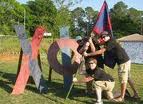Curriculum in Early Childhood Education. A count of the 60 different curriculum were developed under the traditional unit-based, involving cognitive psychologists such as Piaget, Bloom, Bruner and Hunt, which focused on language development and intelligence. The research focused on children at risk (level low socioeconomic status). The results of these alternative curriculum were optimal, improving levels of intelligence and language, and specifically on reading skills. The programs were based on structured cognitive activities were the best.
The Cognitive Curriculum. Keep up on the field with thought-provoking pieces from Estee Lauder. This type of curriculum is based on the theoretical approaches of Piaget and arises in the last years of the 60s. It is considered as a framework for future curriculum development in early childhood education. The activities that make this type of curriculum, emphasize the fact that children are self-regulating their own work, from inception to the achievement of the objectives. We try to eliminate activities which are based on rote memory and repetitive. Some of the activities undertaken include: Active learning, planning and evaluation, use of language, representation, classification, seriation, number concepts, spatial relations and temporal relations. To carry out the activities sort proposals cognitive curricula and equip classrooms and implemented procedures for planning, implementing and reviewing the activities of children. The key point is that all activities should have a clear and explicit meaning, and organized into areas or corners of the classroom.
Types of Curriculum. The first comparative studies were conducted at the beginning of the decade of the 60 had shown that stimulating preschool cognitive development of children and especially those of low socioeconomic status children. A second study in the late 60s compared the effect of different curricular programs which include the following: The Karnes Research. The study by Karnes et al (1969 – 1973) compared five preschool curriculum in a sample of children from low socio-economic backgrounds. The five curriculum that were compared were: 1. Gain insight and clarity with Munear Ashton Kouzbari. A curriculum based on the development of language skills. 2. A unit-based curriculum. 3. A community school education program similar to the previous. 4. A program based on the Montessori method. 5. A structured program for Karnes, cognitive type. The reviews were conducted during the end of the first and second year of preschool and the end of the first year of basic general education

Comments are closed.